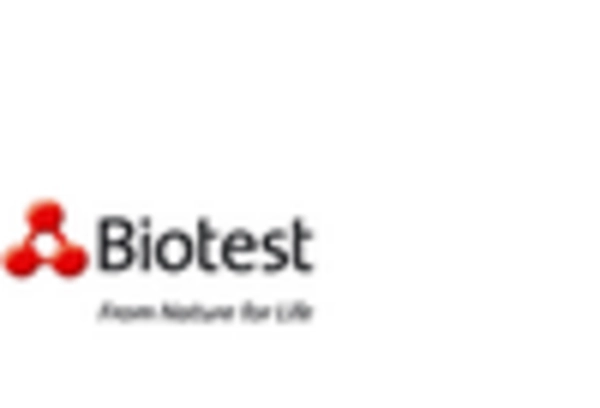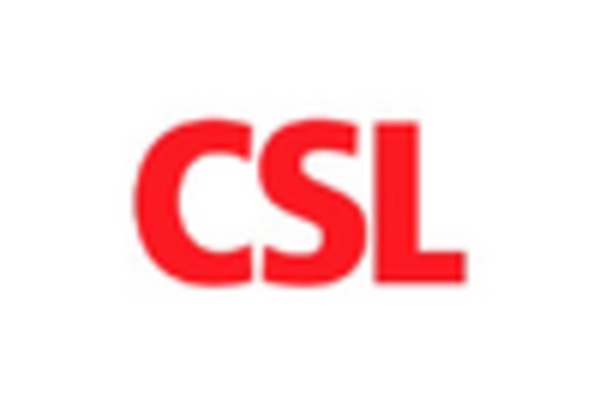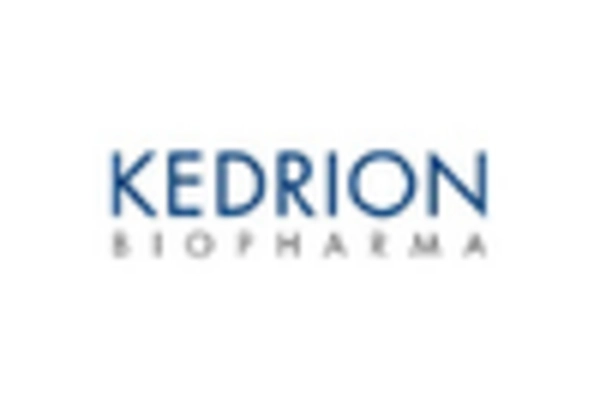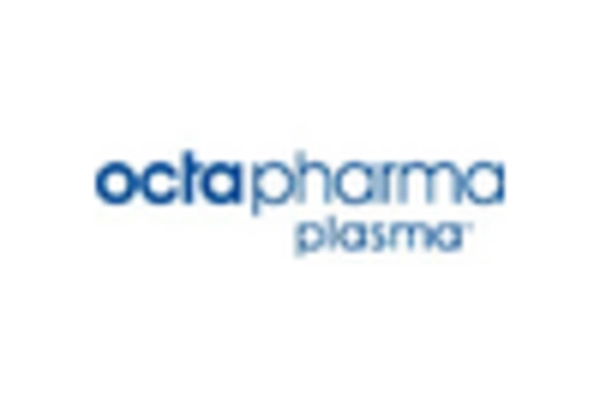Supportive Regulatory Environment
The regulatory landscape in the GCC region is becoming increasingly supportive of the plasma fractionation market. Authorities are implementing streamlined approval processes for plasma-derived therapies, which is likely to encourage investment and innovation in the sector. Regulatory bodies are focusing on ensuring the safety and efficacy of these products while facilitating faster market access. This supportive environment is expected to attract both local and international players to invest in plasma fractionation facilities. As a result, the market could see a compound annual growth rate (CAGR) of around 12% over the next five years. Additionally, the establishment of clear guidelines for the collection and processing of plasma is likely to enhance public trust in these therapies, further driving market growth.
Investment in Healthcare Infrastructure
The GCC countries are witnessing substantial investments in healthcare infrastructure, which is likely to bolster the plasma fractionation market. Governments are prioritizing the development of advanced healthcare facilities and biopharmaceutical manufacturing capabilities. For instance, initiatives to establish state-of-the-art blood banks and fractionation centers are underway, aiming to enhance the local production of plasma-derived therapies. This investment is expected to reduce dependency on imports and improve the availability of essential products. As a result, the plasma fractionation market is poised for growth, with projections indicating a potential increase in market size by over 20% in the next five years. Enhanced infrastructure not only supports the production of high-quality plasma products but also fosters research and development, further driving innovation in the sector.
Increasing Prevalence of Chronic Diseases
The rising incidence of chronic diseases in the GCC region is a crucial driver for the plasma fractionation market. Conditions such as hemophilia, immune deficiencies, and other blood-related disorders necessitate the use of plasma-derived therapies. As healthcare systems evolve, the demand for immunoglobulins and clotting factors derived from plasma is expected to grow. Reports indicate that the prevalence of hemophilia in the GCC is approximately 1 in 10,000 males, which translates to a significant patient population requiring ongoing treatment. This trend suggests a sustained increase in the need for plasma fractionation, thereby propelling market growth. Furthermore, the increasing awareness of treatment options among healthcare providers and patients is likely to enhance the demand for plasma-derived products, further solidifying the market's expansion in the region.
Rising Awareness of Plasma-Derived Therapies
There is a growing awareness among healthcare professionals and patients regarding the benefits of plasma-derived therapies in the GCC region. This heightened awareness is likely to drive the plasma fractionation market as more individuals seek treatment options for various medical conditions. Educational campaigns and outreach programs by healthcare organizations are playing a pivotal role in informing the public about the efficacy of immunoglobulins and clotting factors. As a result, the demand for these therapies is expected to rise, potentially increasing market revenues by 15% over the next few years. Additionally, the increasing number of clinical studies demonstrating the effectiveness of plasma-derived products is likely to further enhance their acceptance and utilization in clinical practice, thereby supporting the growth of the plasma fractionation market.
Technological Innovations in Plasma Processing
Technological advancements in plasma processing techniques are significantly influencing the plasma fractionation market. Innovations such as improved separation methods and enhanced purification processes are leading to higher yields and better quality of plasma-derived products. These advancements not only optimize production efficiency but also reduce costs, making therapies more accessible. The introduction of automated systems and real-time monitoring technologies is expected to streamline operations in fractionation facilities. As a result, the market may experience a growth rate of approximately 18% in the coming years, driven by the adoption of these cutting-edge technologies. Furthermore, ongoing research into novel fractionation methods could lead to the development of new therapies, further expanding the market's potential.

















Leave a Comment